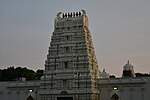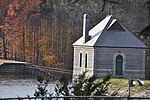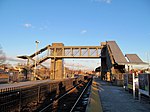Lloyd's Diner
Buildings and structures in Framingham, MassachusettsCommercial buildings completed in 1940Diners in MassachusettsDiners on the National Register of Historic PlacesMiddlesex County, Massachusetts Registered Historic Place stubs ... and 2 more
National Register of Historic Places in Middlesex County, MassachusettsRestaurants on the National Register of Historic Places in Massachusetts

Lloyd's Diner is a historic diner at 184A Fountain Street in Framingham, Massachusetts. Formerly Whit's Diner in Orange, Massachusetts, it was moved its present location in 1990. Built as #783 by the Worcester Lunch Car Company in 1942, it was operated by Robert and Richard Whitney until about 1960 as Whit's, and then under other ownership as the Orange Diner. It was purchased by Richard and Joan Lloyd in 1990 and moved to Framingham.The diner was listed on the National Register of Historic Places in 2003.
Excerpt from the Wikipedia article Lloyd's Diner (License: CC BY-SA 3.0, Authors, Images).Lloyd's Diner
Fountain Street, Framingham
Geographical coordinates (GPS) Address Nearby Places Show on map
Geographical coordinates (GPS)
| Latitude | Longitude |
|---|---|
| N 42.275277777778 ° | E -71.433888888889 ° |
Address
Fountain Street 186
01702 Framingham
Massachusetts, United States
Open on Google Maps








